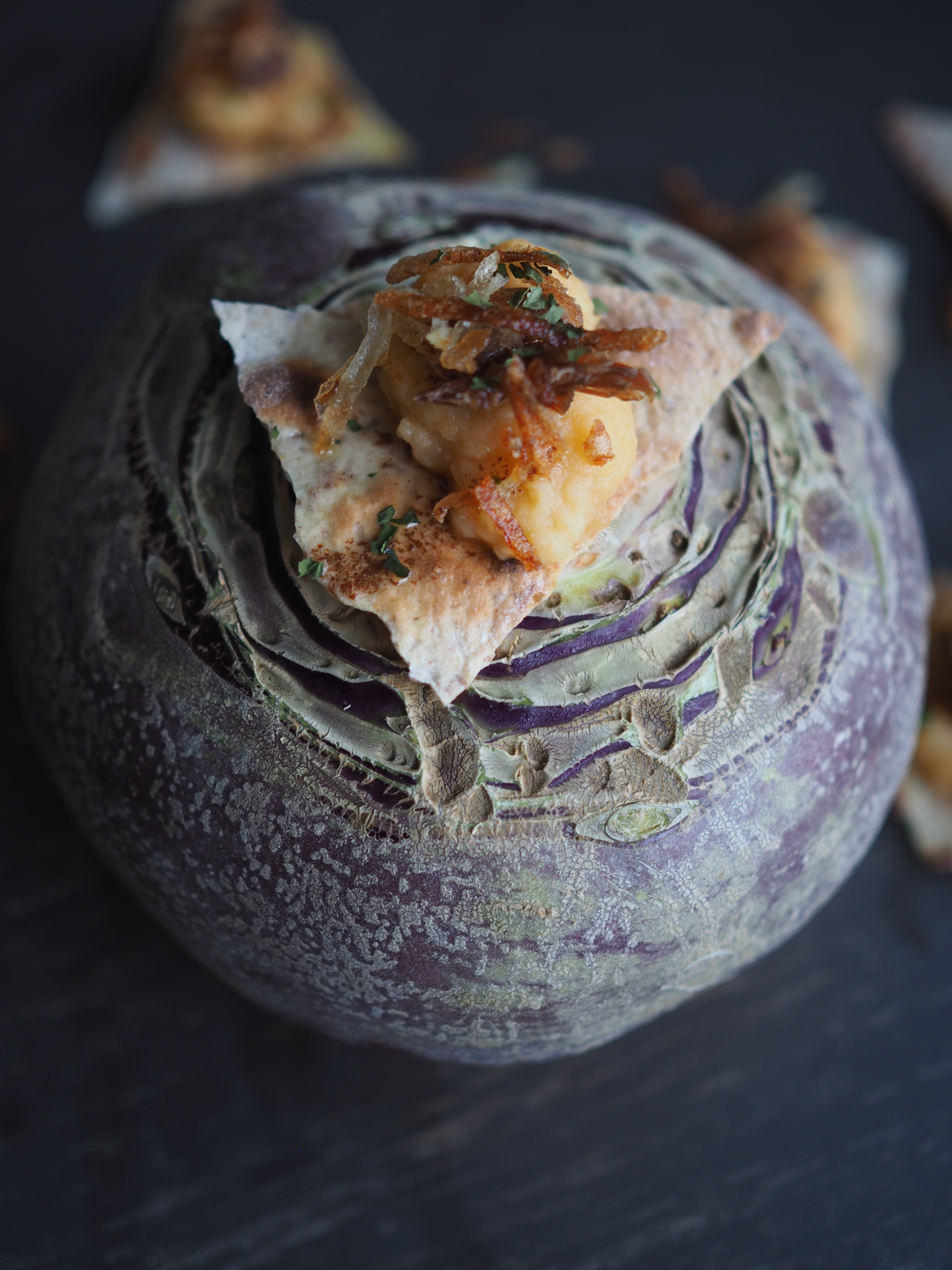
 Traditions are like threads. Threads pieced together from generation to generation. Some threads break loose and are replaced with newer ones, but others remain at the core. The dishes we eat are just a few of those threads. Everyone has their favorites, their must-haves, and when those are satisfied, there’s room for a few new threads.
Traditions are like threads. Threads pieced together from generation to generation. Some threads break loose and are replaced with newer ones, but others remain at the core. The dishes we eat are just a few of those threads. Everyone has their favorites, their must-haves, and when those are satisfied, there’s room for a few new threads.
Tradition is a celebration of time past and tells the stories that make up our memories, but it also celebrates the present and our evolving tastes. In tradition, there is room for innovation and the embrace of individual desires.
While reflecting over Norwegian Christmas traditions, I was asked, dare I say challenged, to come up with a unique way of presenting the dish that one third of Norwegians consume every Christmas Eve. Pinekjøtt. Rather than create smoke and mirrors, I decided to package it all in a different way.
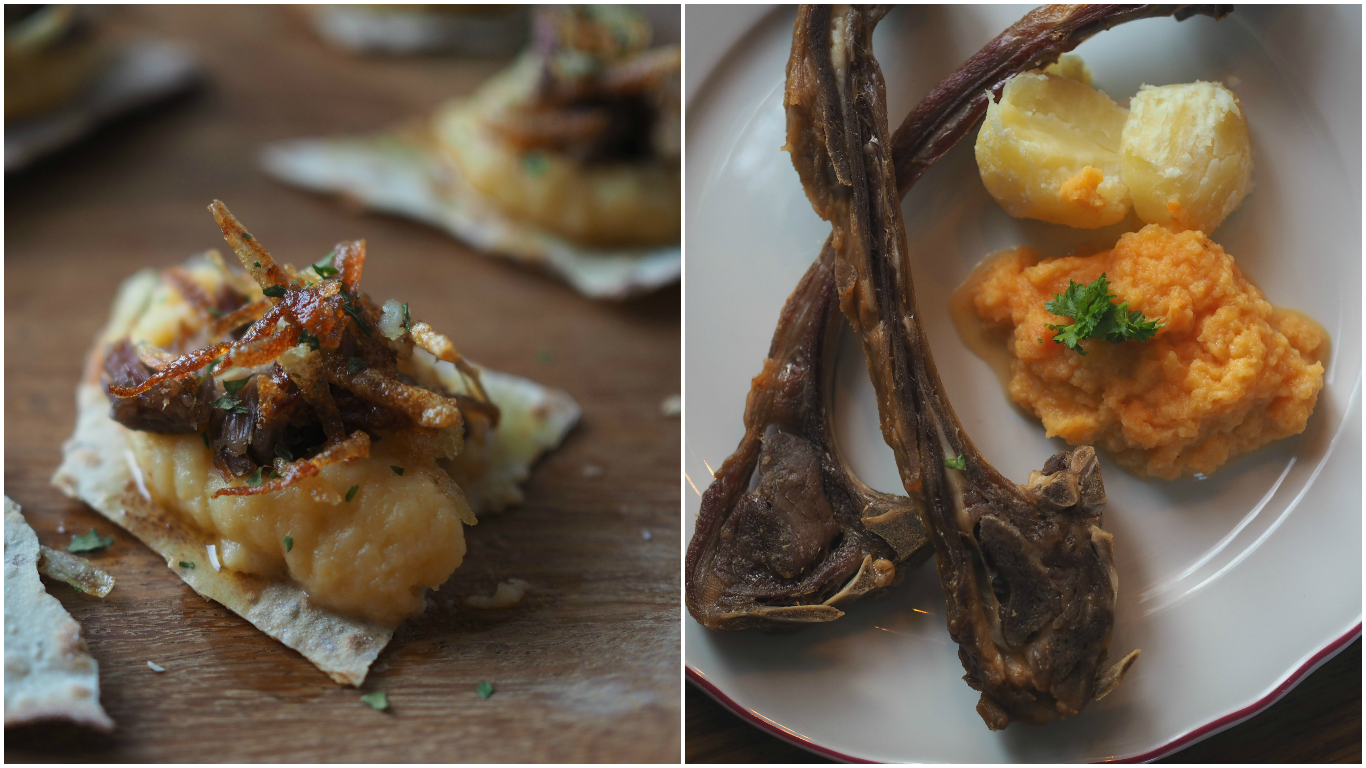
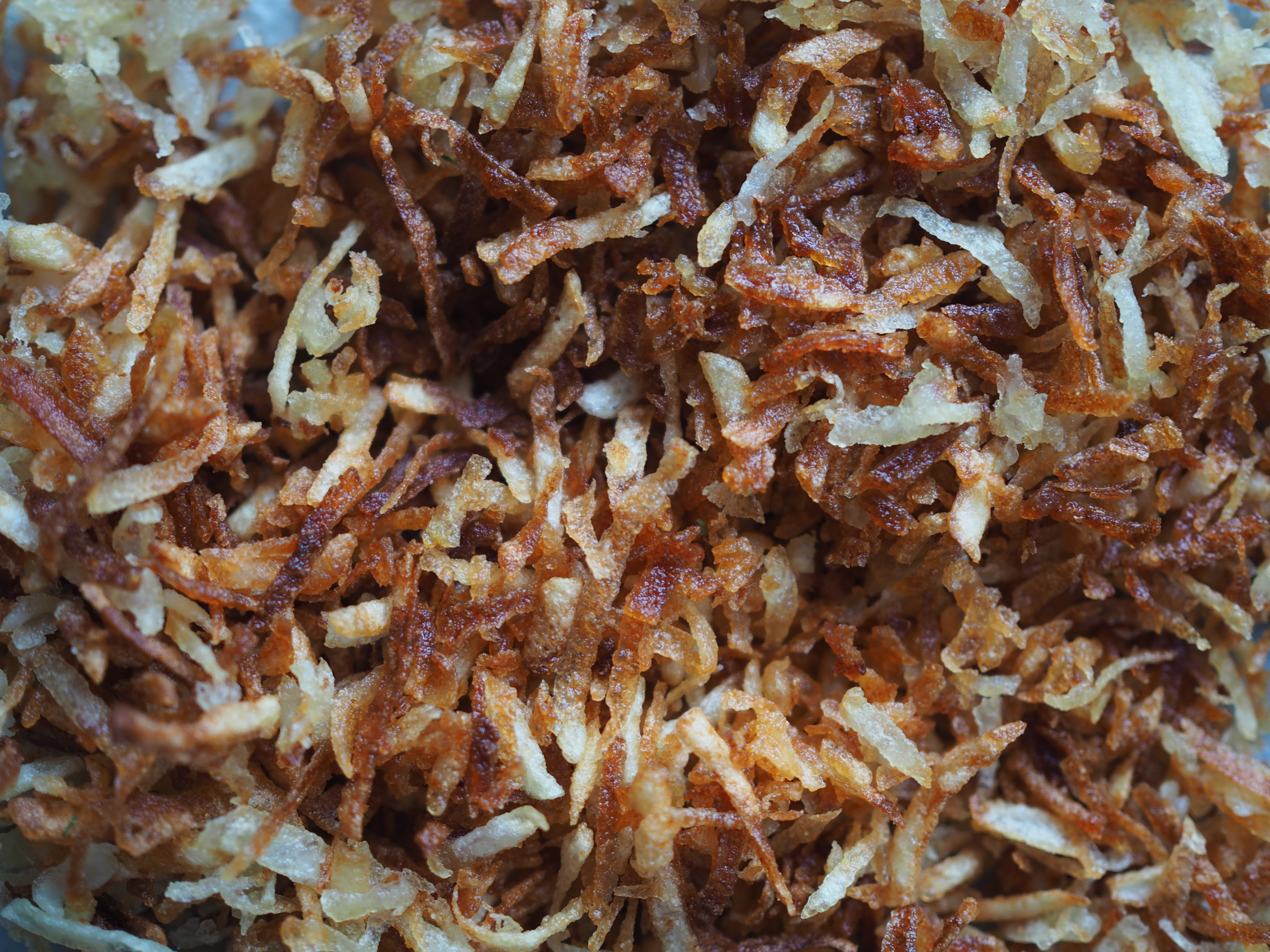
 The classic Pinekjøtt meal includes cured lamb ribs (pinnekjøtt), rutabaga mash (kålrabistappe), boiled potatoes (kokte poteter), and perhaps a sausage (julepølser) or two.
The classic Pinekjøtt meal includes cured lamb ribs (pinnekjøtt), rutabaga mash (kålrabistappe), boiled potatoes (kokte poteter), and perhaps a sausage (julepølser) or two.
The dish traces back to the 1700s, but is most likely older than that. It comes out of the old agrarian society and way of preserving meat through curing, drying and smoking. The lamb ribs, like today, were salted, dried and sometimes smoked before being placed on a layer of sticks in an iron pot. They were then cooked over an open fire. The meat, with its high fat content, made it an ideal feast and celebration food.
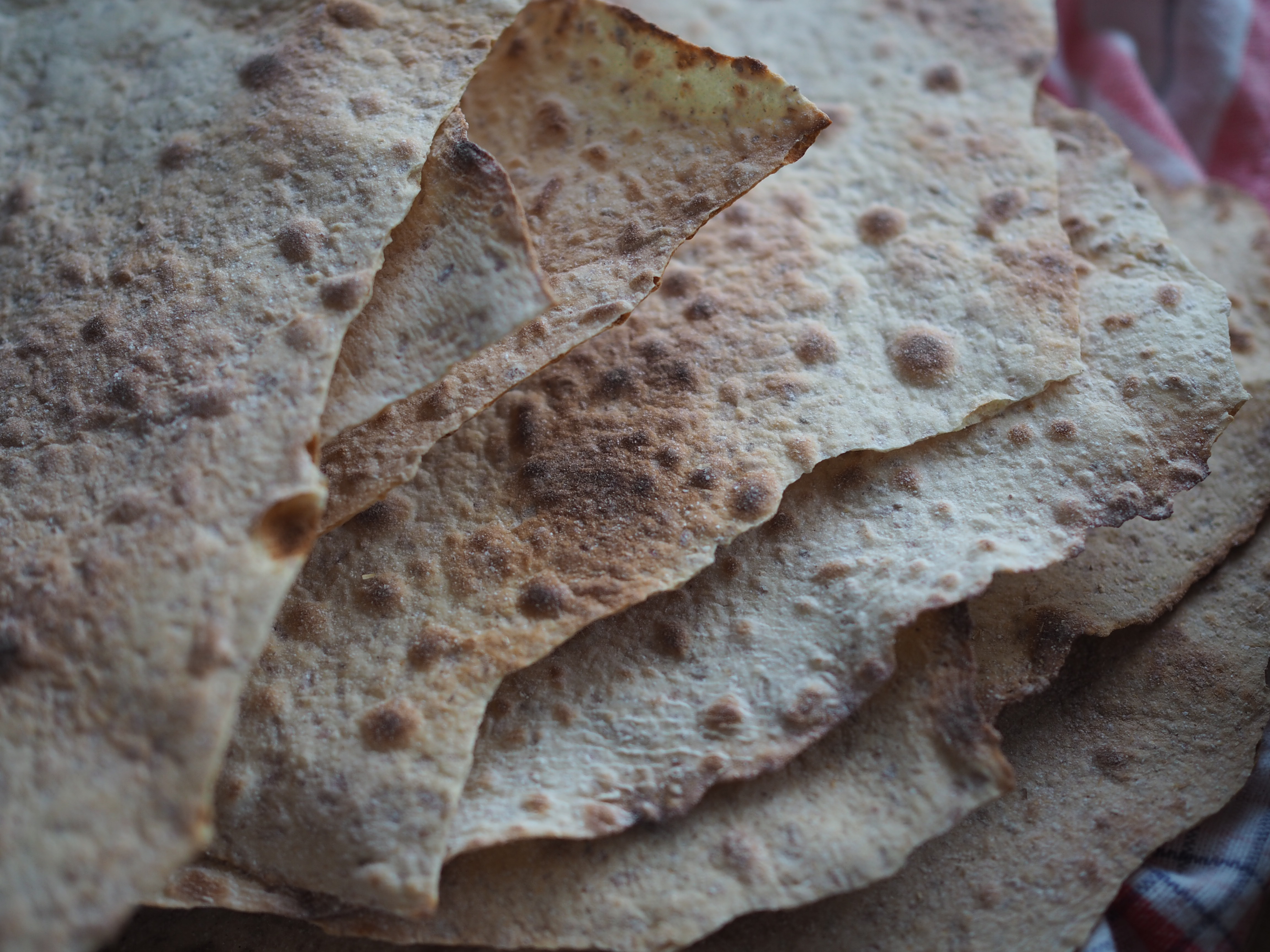
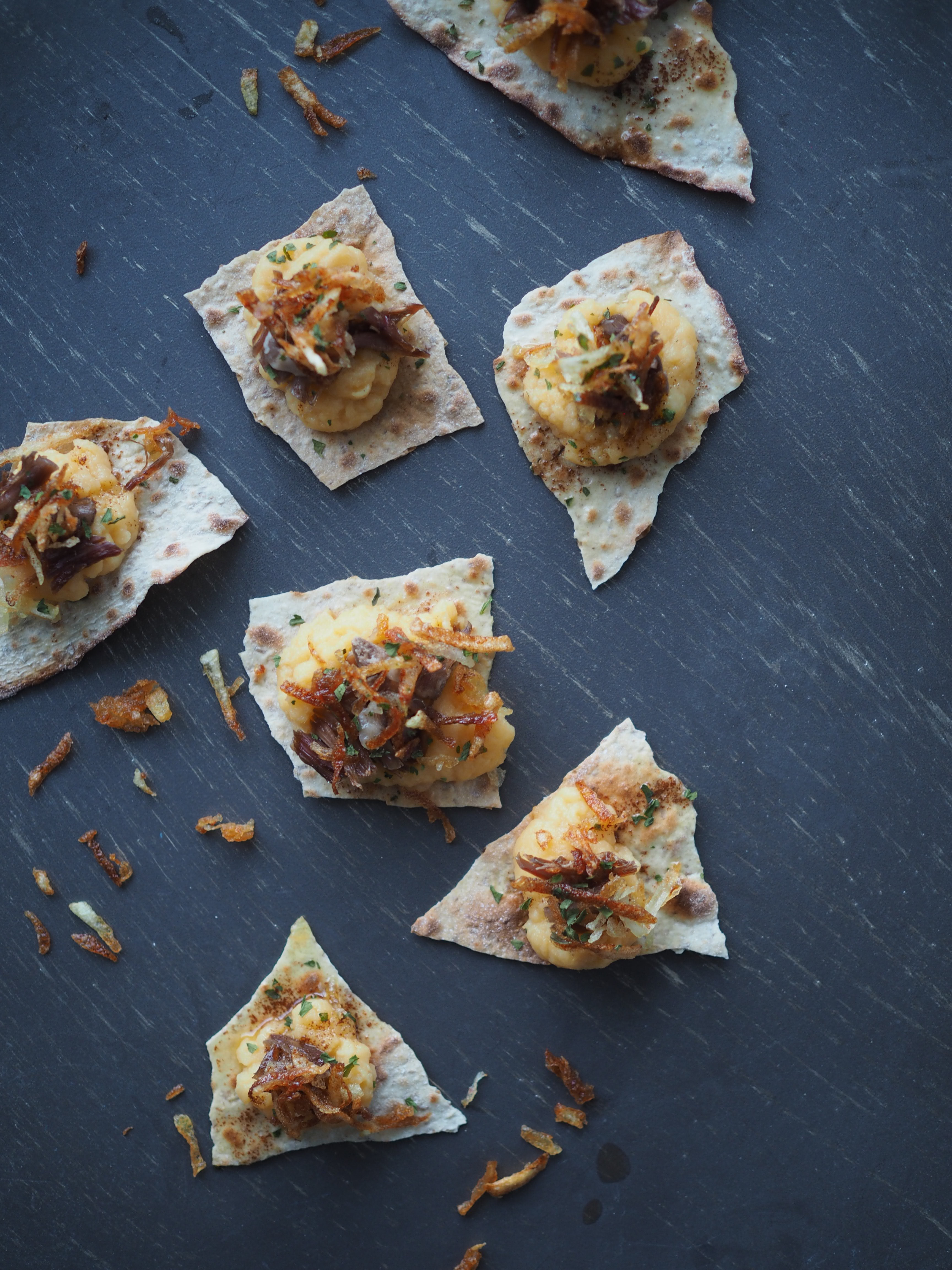
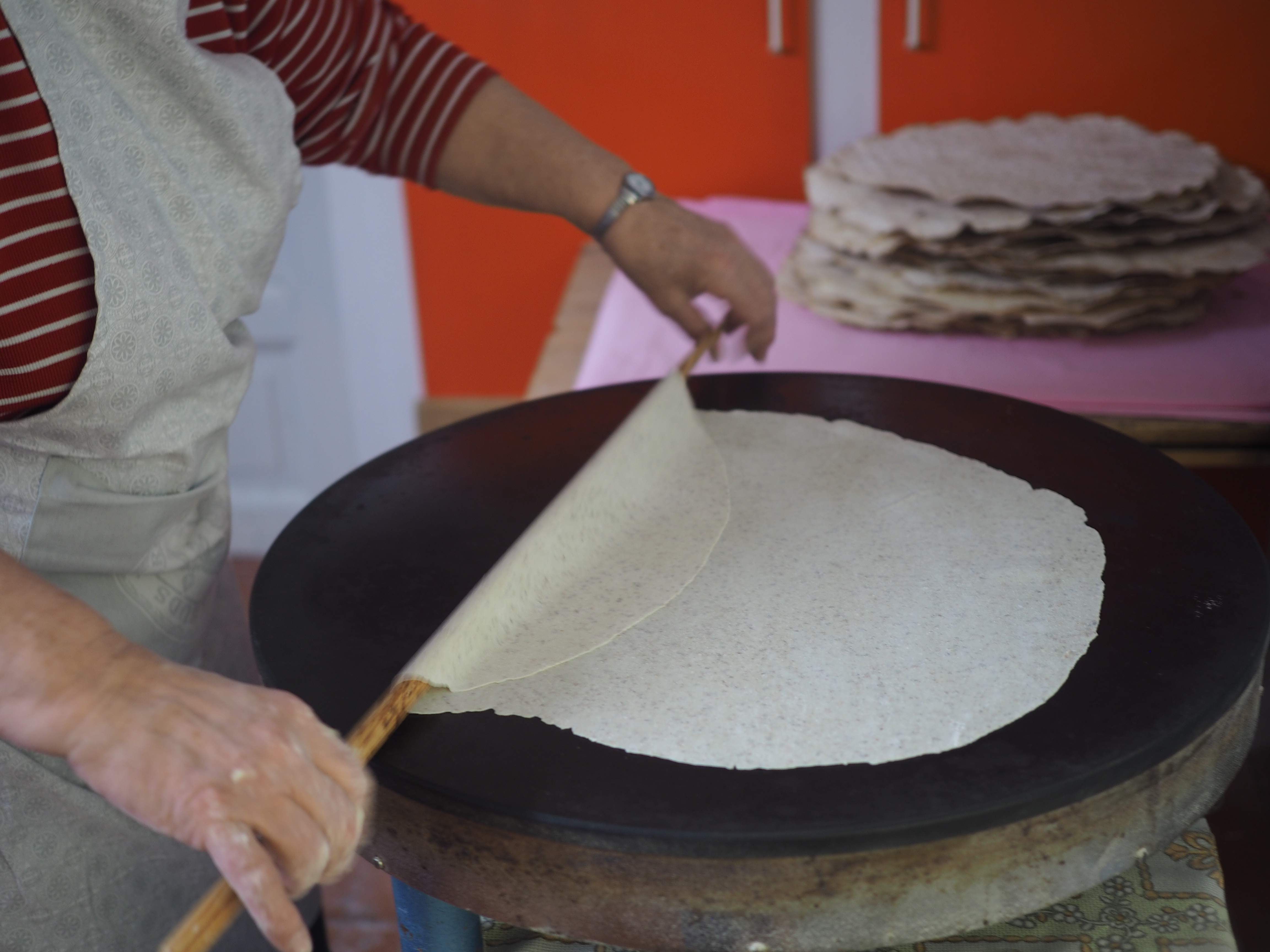 The day I was going to start experimenting in the kitchen, I was invited by two local ladies to join them for their biannual baking of homemade potetflatbrød (potato flatbread). I spent the whole morning learning about their techniques and their recipe, which they have been perfecting for ten years. I observed as they shuffled from the mixer to the roller and to the griddles. Their potetflatbrød was delicious and their stories and skills even better.
The day I was going to start experimenting in the kitchen, I was invited by two local ladies to join them for their biannual baking of homemade potetflatbrød (potato flatbread). I spent the whole morning learning about their techniques and their recipe, which they have been perfecting for ten years. I observed as they shuffled from the mixer to the roller and to the griddles. Their potetflatbrød was delicious and their stories and skills even better.
I took a tea towel full of their potetflatbrød home and felt inspired to use it for my variation on pinnekjøtt dinner. Flatbrød is the perfect starting point because it pairs with everything. Sweet and savory and anything in between. From this, pinnekjøtt with flatbread began.
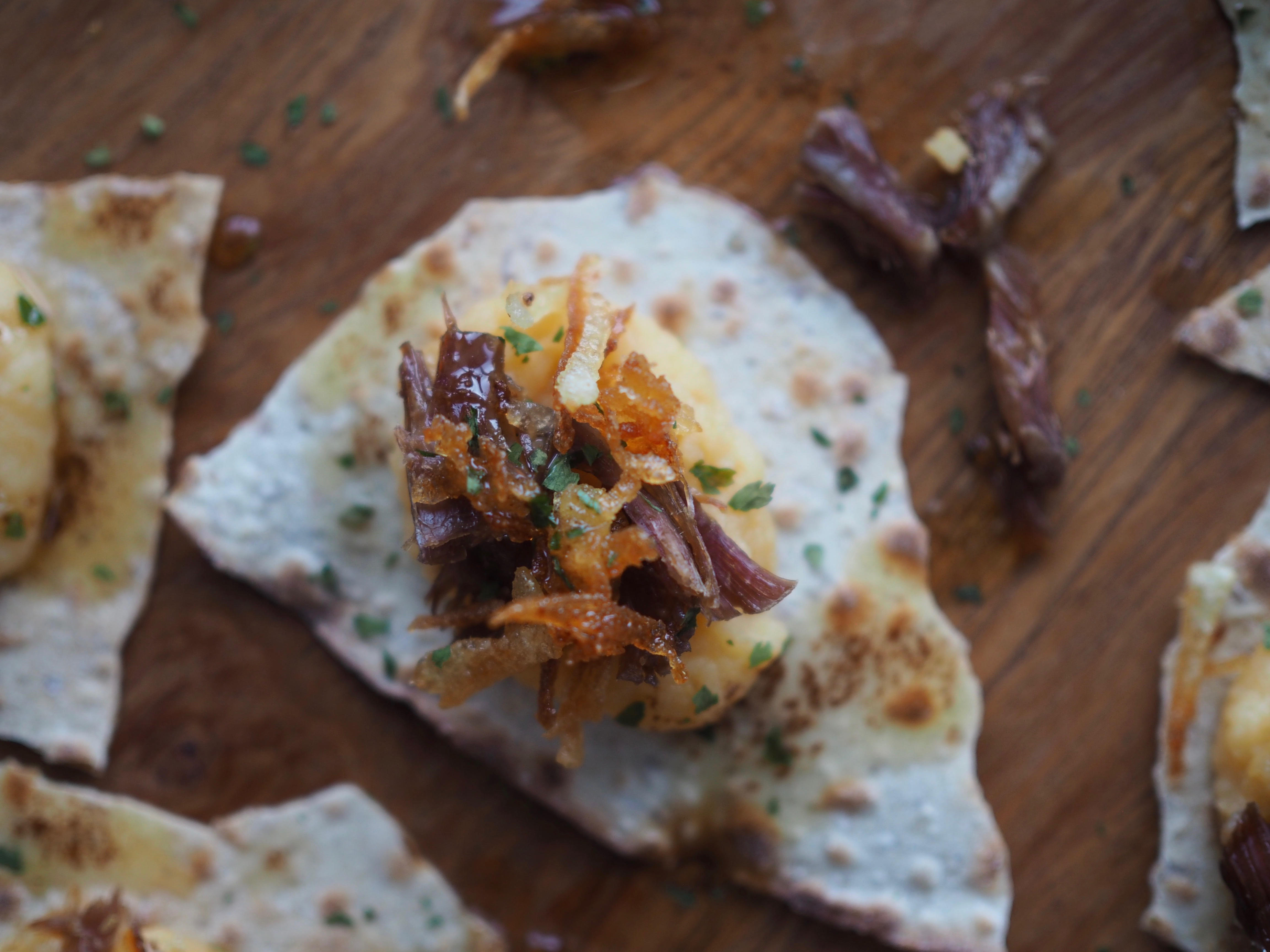 What I adore about this dish, is that celebrates pinnekjøtt without gravitating too far from the traditional plate. At its core, it’s just a deconstructed meal. With flatbread as the base, mashed rutabaga and pulled pieces of pinnekjøtt pile high before being topped with a sprinkling of crispy short-shoestring potatoes.
What I adore about this dish, is that celebrates pinnekjøtt without gravitating too far from the traditional plate. At its core, it’s just a deconstructed meal. With flatbread as the base, mashed rutabaga and pulled pieces of pinnekjøtt pile high before being topped with a sprinkling of crispy short-shoestring potatoes.
It’s customary to pour a little bit of fat over pinnekjøtt (it’s a once-a-year meal, so why not indulge a bit). In this version, I’ve replaced the lamb fat with browned butter with a dash of freshly-squeezed lemon to cut through the other flavors, rounding everything off perfectly. Toss some parsley on top and you have pinnekjøtt dinner in bite-size. Serve this as a pre-Christmas party appetizer or as a way to use up leftovers the next day.
Pinnekjøtt with Flatbread, Rutabaga, Crispy Potatoes & Lemon Browned Butter
Ingredients:
- Pinnekjøtt, cooked and warmed (lamb ribs, see notes)
- Quality flatbread (see notes)
Rutabaga Mash / Kålrabistappe
- 1 large rutabaga/swede/kålrabi, peeled and cut into medium-sized pieces
- 1/4 cup whole milk
- 2-3 Tb butter
- 1/2 tsp salt
Crispy, Short-Shoestring Potatoes
- 3-4 medium white potatoes
- oil for frying
Lemon Browned Butter
- 2 Tb butter
- 1 tsp freshly squeezed lemon juice
- fresh parsley, chopped
Begin by preparing the rutabaga mash. Place the rutabaga pieces in a large stockpot and cover with water. Add a little bit of salt and bring to a light boil. Cook until the rutabaga is tender and a knife easily pierces through it. Take off the heat and drain. Add the milk, butter and salt to the rutabaga. With a hand blender (a potato masher will not work as well), puree until smooth. Season to taste.
To make the crispy potatoes, start by peeling the potatoes and shredding them with a grater. Rinse them thoroughly and then wrap them in a tea towel/cheesecloth, squeezing out as much of the liquid as possible. Add oil to a medium-sized, deep pot – no more than half way. Heat the oil and take one piece of the shredded potato to check the temperature. If it sizzles and rises immediately, the oil is ready. Add a small batch of the shredded potatoes to the hot oil and fry them until they are crisp and golden in color. Remove with a metal slotted spoon and place on a plate covered with paper towels. Season with a little salt. Continue to fry in small batches until all of the potato shreds are cooked.
In a small saucepan, melt the butter over moderately low heat. Simmer the butter until golden brown with a nutty aroma. This will take around about 5 minutes. Remove from the heat and add stir in the lemon juice.
To assemble, take small pieces of flatbread and place on a serving tray. Place a spoonful of the rutabaga mash on top of each one, followed by pieces of warmed pinnekjøtt which has been pulled away from the bone. Top with a couple shreds of the crispy potatoes. Drizzle a spoonful of the lemon browned butter and sprinkle parsley on top. Serve warm.
Notes:
*Here is my recipe for homemade pinnekjøtt. If you cannot access pinnekjøtt, you can substitute it with cooked lamb ribs or pulled lamb meat. You may wish to season the lamb ribs or pulled meat with extra salt to get the taste more similar to that of pinnekjøtt.
*Norwegian flatbrød is thin and crispy, similar to a cracker rather than bread. The flavor is very plain and simple, so if you are using a substitute make sure to get one as close to a Norwegian version as possible. You will want the flatbread to be thin but strong. It has to hold the ingredients without softening so much that it falls apart.
*Rutabaga/Swede contains quite a bit of moisture so be sure not to add too much milk when mashing it.
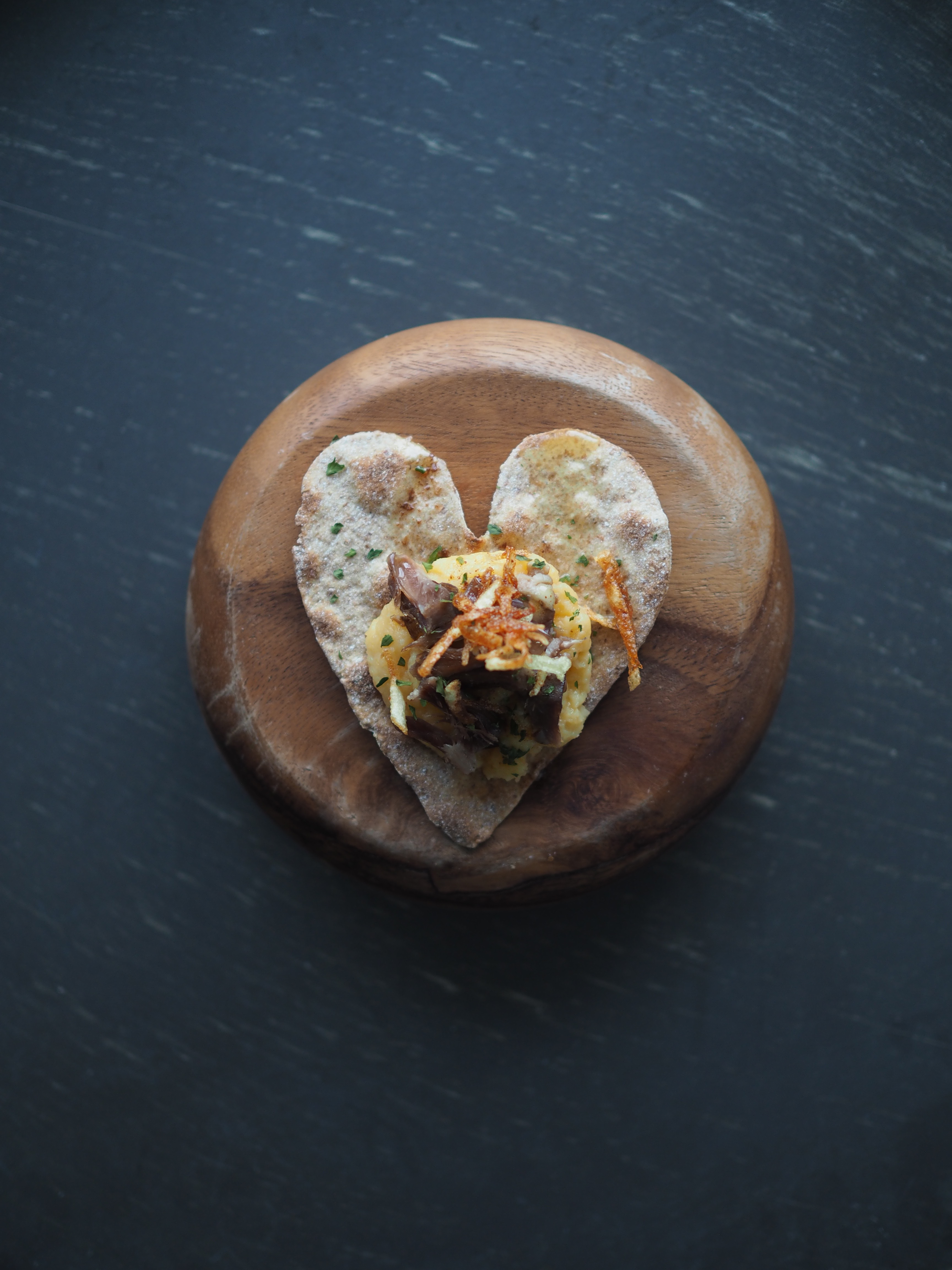
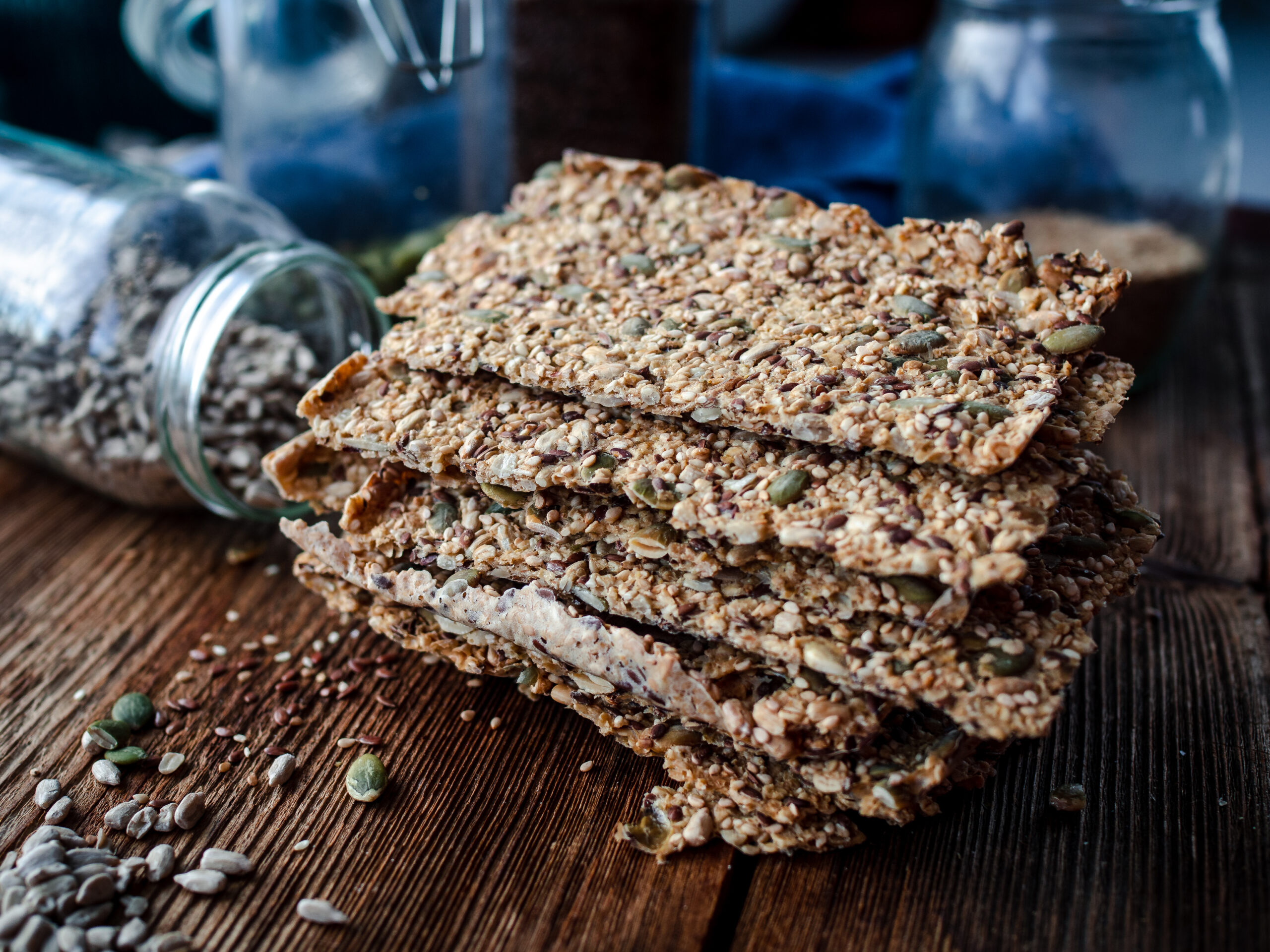
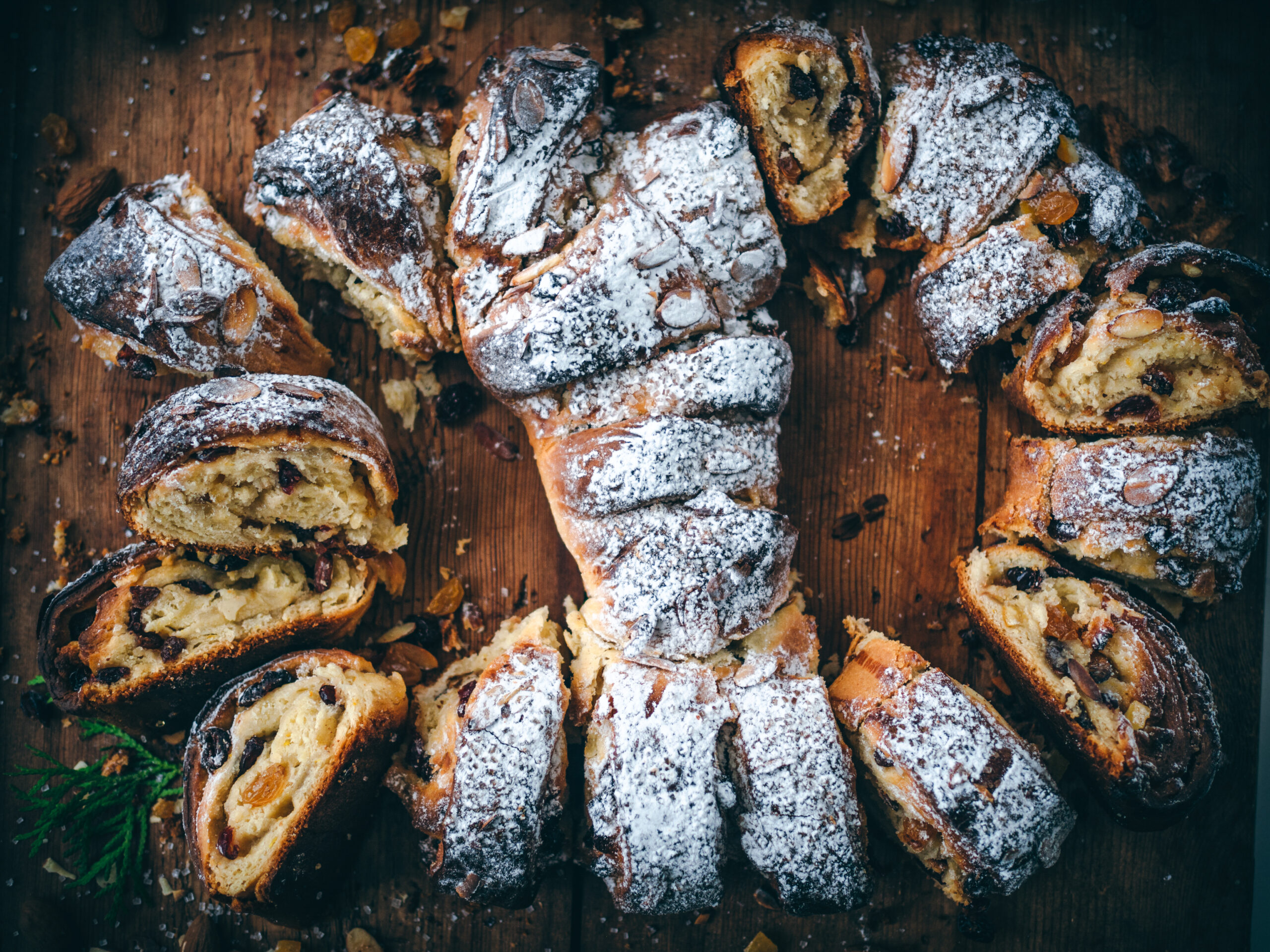
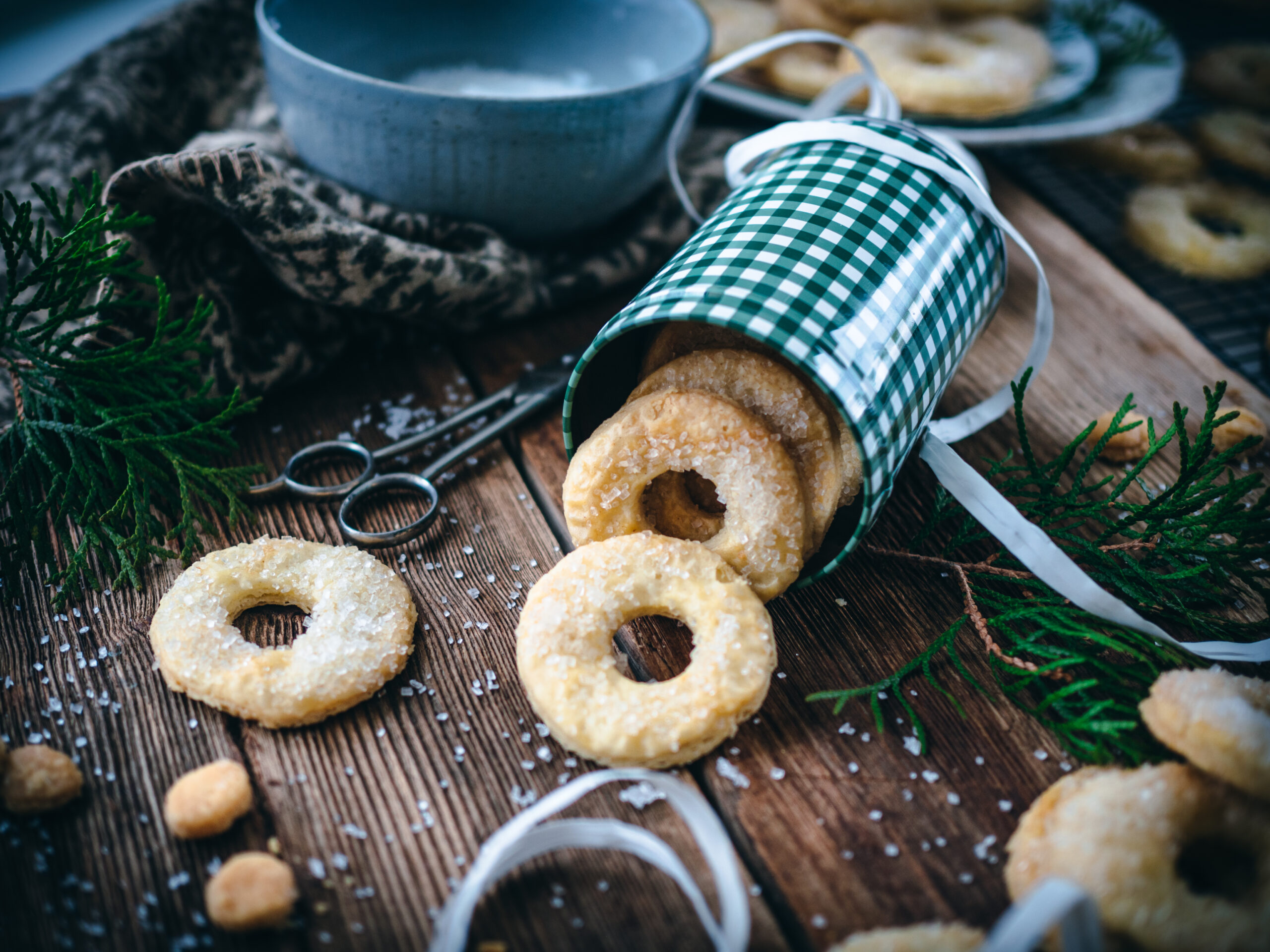
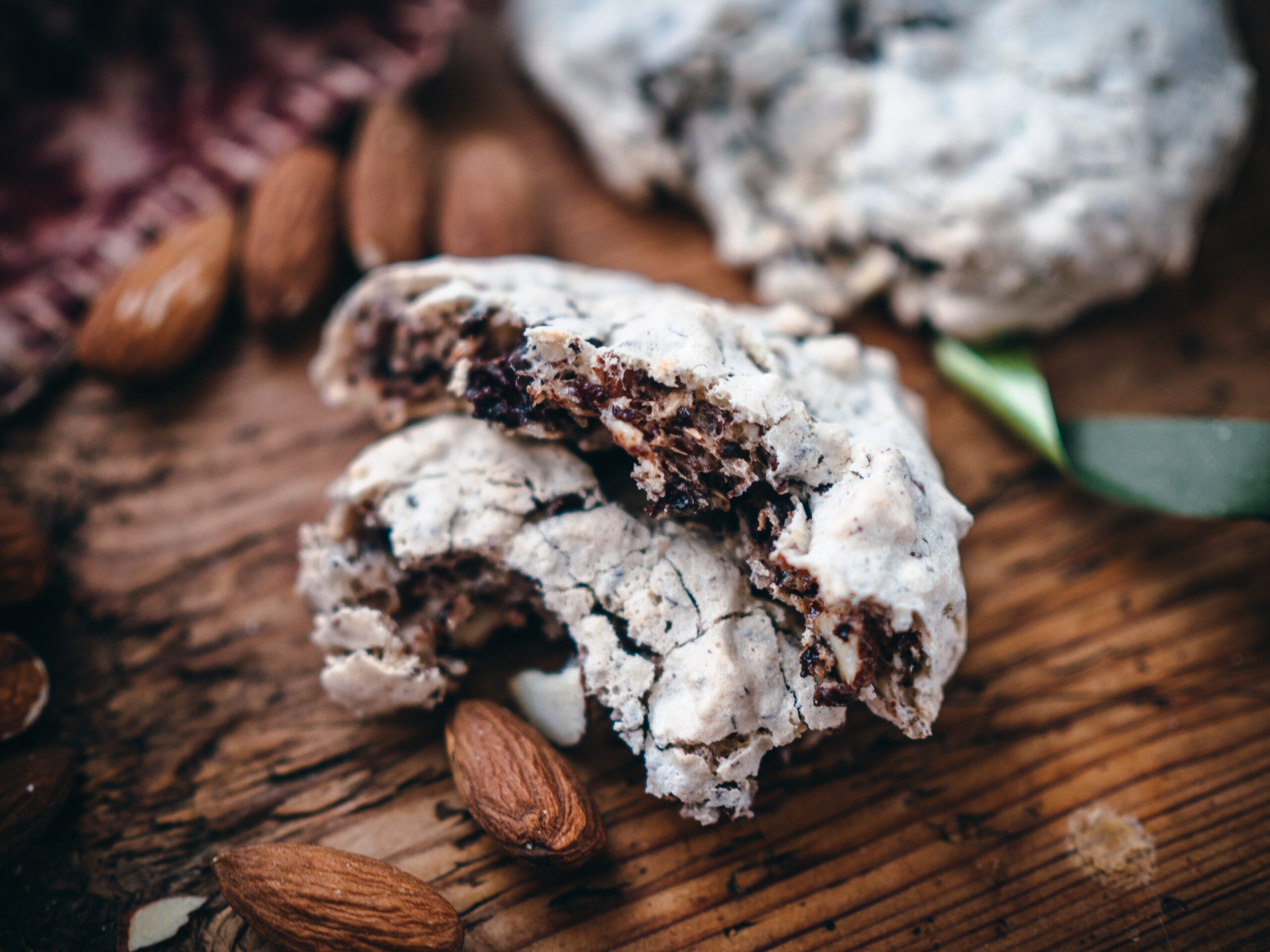

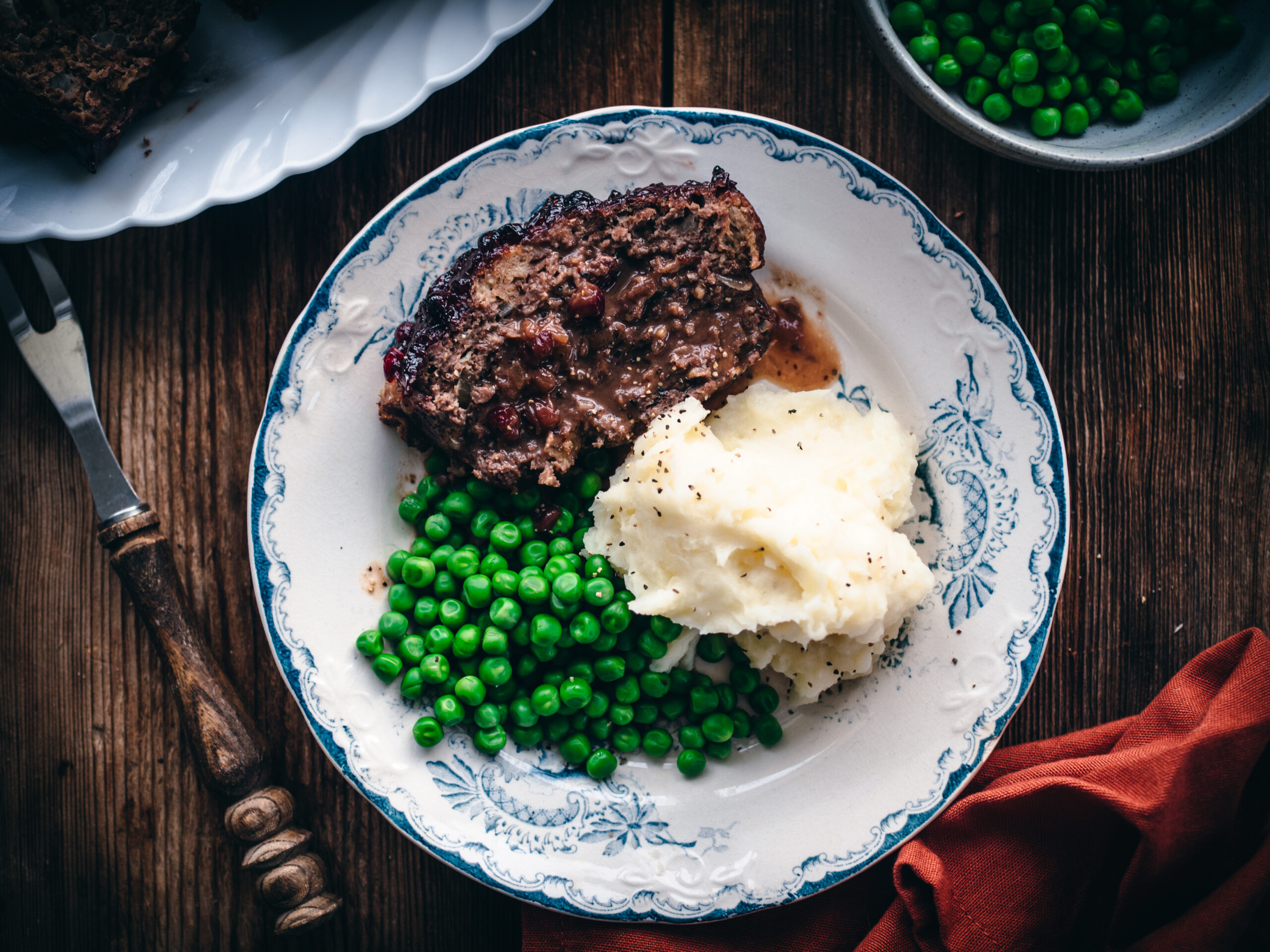
Add a comment